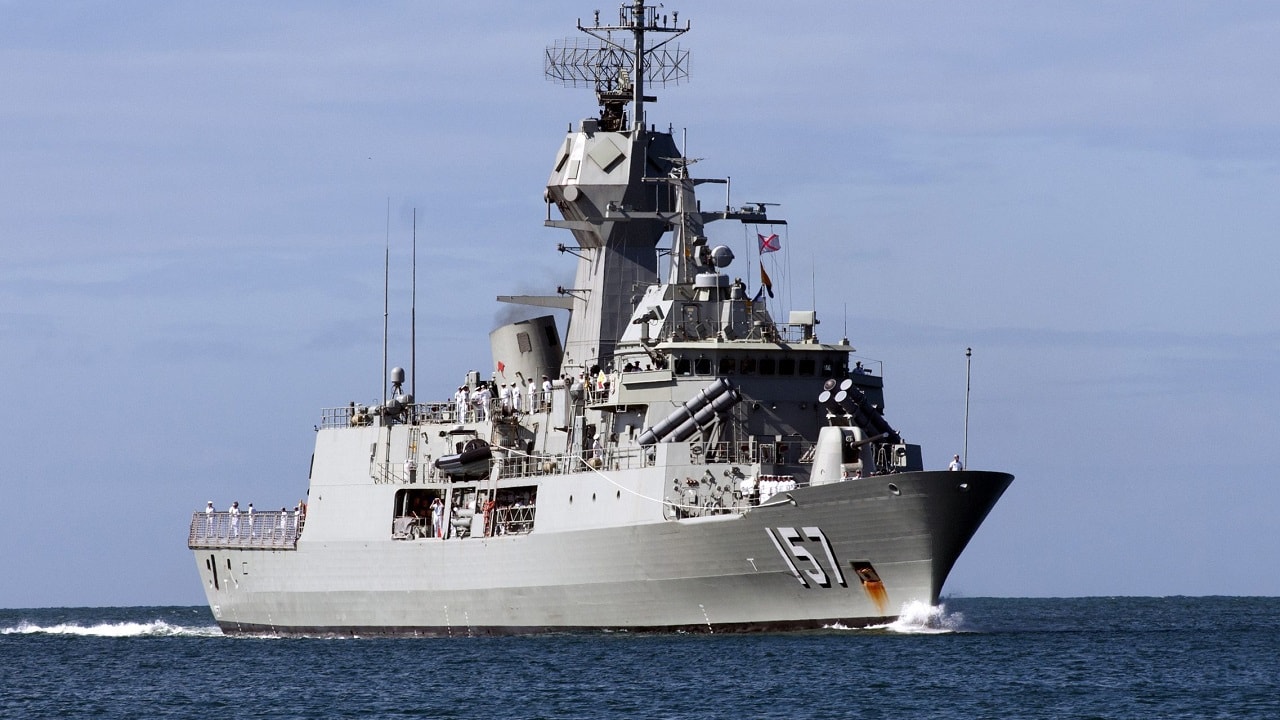Australia’s Navy Can’t Stop Chinese Anti-Ship Missiles, Warns Study – Australia’s navy lacks adequate defenses against massed salvoes of Chinese anti-ship missiles, according to a new study by an Australian think tank.
“Australia faces a bleak future, and the window for expediting effective countermeasures is rapidly closing,” warns the Australian Strategic Policy Institute (ASPI) report.
Many of these threats also worry the U.S. Navy and other nations that face a potential deluge of Chinese ship-killer weapons. China fields a diverse array of anti-ship missiles, including the supersonic YJ-18 mounted on Chinese warships and the air-launched YJ-83K. But particularly dangerous is China’s YJ-12 supersonic anti-ship cruise missile (ASCM), which has an estimated range of up to 537 kilometers (334 miles) and a speed of up to Mach 3. The YJ-12 can be launched by aircraft and ships, as well the land-based coastal defense batteries on Chinese-held natural and artificial islands in the South China Sea. This could give China the ability to destroy warships and merchant vessels while staying safely out of range of enemy defenses.
Interestingly, while missile defense tends to focus on detecting and shooting down missiles, the ASPI study points to another problem: Australian ships will run out of interceptor rockets before China runs out of anti-ship missiles.
“The PLA’s ASCM threat is very significant because existing Royal Australian Navy (RAN) surface ships have small air-defense missile magazines, and even future surface ships that are planned to begin arriving around 2033 won’t rectify the fleet-wide shortfall of vertical launching system (VLS) missile cells,” ASPI said.
Australia’s eight Anzac-class frigates each have eight U.S.-designed Mk 41 VLS cells, with each cell armed with four short-range Evolved Sea Sparrow missiles that can intercept aircraft or anti-ship missiles. The Anzac frigates are slated to remain in service until 2044 as the new Hunter-class frigates are phased in.
That leaves the RAN with just three of the more capable Hobart-class destroyers armed with longer-range SM-6 missiles. “A single Hobart-class guided-missile destroyer carries 48 strike-length Mk-41 VLS cells,” ASPI noted. “With a load-out of 48 SM-6 air defense interceptors, a PLAN strike package of just eight H-6J bombers (each carrying six YJ-12 ASCMs) would deplete a Hobart destroyer’s entire Mk-41 VLS magazine. This assumes an optimistic 100 percent SM-6 intercept success rate.”
“However, Hobart destroyers will more likely employ a layered defense with a load-out of 32 SM-2/SM-6s and 64 ESSMs. This loadout would allow every PLA ASCM to be countered with one shot of SM-2/SM-6 and two shots of ESSM as a backstop. In theory, this would only allow a single Hobart destroyer to defend against 32 PLA ASCMs: just six PLA H-6J bombers would be needed to deliver 36 YJ-12 ASCMs.”
Even Australia’s new Hunter-class ships, scheduled to be deployed by 2033, will only be armed with 32 VLS cells. “This means that the RAN surface combatant fleet won’t be able to deploy significant numbers of long-range anti-air, anti-submarine, anti-ship and land-attack ordnance,” said the report.
ASPI offers several solutions. In the short term, RAN warships could meet mass with mass: replacing larger SM-6 with greater numbers of the Rolling Airframe Missile (RAM), Phalanx 20-millimeter Gatling cannon and the new RIM-162 Evolved Sea Sparrow – with a range of 27 miles and a speed of Mach 4 – would enable Australian task forces to put up a huge amount of anti-missile firepower against massed anti-ship salvoes.
A longer-term solution would be to acquire proven air defense ships such as U.S. Arleigh Burke-class destroyers equipped with Aegis missile defense systems. Or, robot ships equipped with sensors to extend missile detection range, or even VLS cells to launch interceptors.
But given the historical flaw in missile defense – that it’s easier and cheaper to launch offensive missiles than to intercept them — the ultimate solution is to destroy missiles before they can be launched. ASPI suggests that Australia could develop long-range strike capabilities – including cyberwarfare and anti-satellite weapons — to disrupt China’s sensor-to-shooter kill chain.
“Breaking the PLA’s ASCM kill chain could also be achieved through the acquisition of a B-21 Raider long-range stealth bomber capability,” says the study, which postulates an Australian fleet of 30 of the B-21s, which are currently being developed as the U.S. Air Force’s next-generation stealth bomber.
How Australia would pay for 30 B-21s – that probably will cost more than US$2 billion each – isn’t clear. Australia’s entire 2022 defense budget is just US$36 billion.
This illustrates the problem for a medium-sized nation like Australia when contemplating war with China. Australia’s military – well-trained and equipped with high-tech weapons — may be tasked with vital missions, such as joint operations with U.S. and allied nations to defend Taiwan, or protecting trade routes from Chinese raiders. But Australia, like Britain, simply doesn’t have the resources to develop or acquire large numbers of sophisticated weapons to battle the much larger Chinese military.
In a conflict of sheer numbers with Australia, China will have the edge.
A seasoned defense and national security writer and expert, Michael Peck is a contributing writer for Forbes Magazine. His work has appeared in Foreign Policy Magazine, Defense News, The National Interest, and other publications. He can be found on Twitter and Linkedin.

